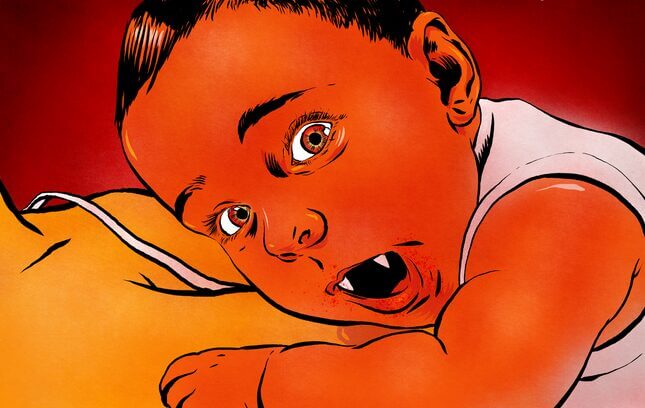Your Baby Is a Vampire and So Is Mine
Latest

While human people are sleeping, my baby awakes. She whines and wriggles over to my listless body. Leading with her pale, swollen cheeks and newly cut teeth, she pounces on my chest. My flesh of my flesh uses her sharp talons to pull the wound on my breast into her mouth. Then, she sucks my blood.
I don’t mean that she seems to suck my blood because our night-long suck-fests leave me so parched that my tongue sticks to the roof of my mouth—although that is certainly true. I mean that babies are vampires because milk is blood, mostly.
The breast is basically a little factory that repackages the nutrients from your blood into a more palatable beverage and then stores it for extraction. In case high-school anatomy is a blur of formaldehyde and dead cats, mammary glands are oversized sweat glands that serve one ultimate purpose: spraying your hard-earned stockpile of nutrients into the mouth of your vampire baby.
To oversimplify, here’s how milk production works: Inside each mammary gland there are bunches of alveoli; these cells are vats that fill with milk. Lining the walls of each vat, there are bands of lactocytes, or food processing cells. Capillaries act as pipelines, sapping the protein, fat, and sugar from your blood and delivering those nutrients to the food processors; the lactocytes filter and modify those ingredients before ushering them to the vat.
Other nutrients pass directly from the pipe into the vat through spaces between the processors. Those unprocessed ingredients include plasma, vitamins, and leukocytes. Leukocytes, as a reminder, are white blood cells—the cells that fight infections in the body and ooze out of popped zits. Each drop of breastmilk contains one million white blood cells. Your baby is drinking your blood.
I am not the first person to draw this conclusion. In 1993, lactation scholars Jan Riordan and Kathleen Auerbach dubbed breastmilk “white blood” because of its ability to, like blood, deliver nutrients and immunity to babies. The connection between blood and milk is also something that pre-modern scientists postulated. Greek physician Hippocrates (460-377 BCE) argued that human milk derived from menstrual blood, a truly bizarre notion considering the fact that a newly lactating women hasn’t had a period in at least nine months. Somehow that strange idea endured until the 17th century, about a century after anatomists learned from dissecting cadavers that breasts contain glands—which, they correctly presumed, convert blood into milk.
Perhaps it is not a coincidence, then, that the myth of the vampire arose in the 17th century, following the discovery that human milk is made of blood. Joan Acocella, in a New Yorker piece called “In the Blood,” draws the connection tighter, noting that Bram Stocker’s novel Dracula figures the victim, Mina, as “a nursing baby”—feeding at a vampire’s breast in order to become a vampire herself.
-

-

-

-

-

-

-

-

-

-

-

-

-

-

-

-

-

-

-

-

-

-

-

-

-

-

-

-

-

-

-

-

-

-

-

-

-

-

-

-








































